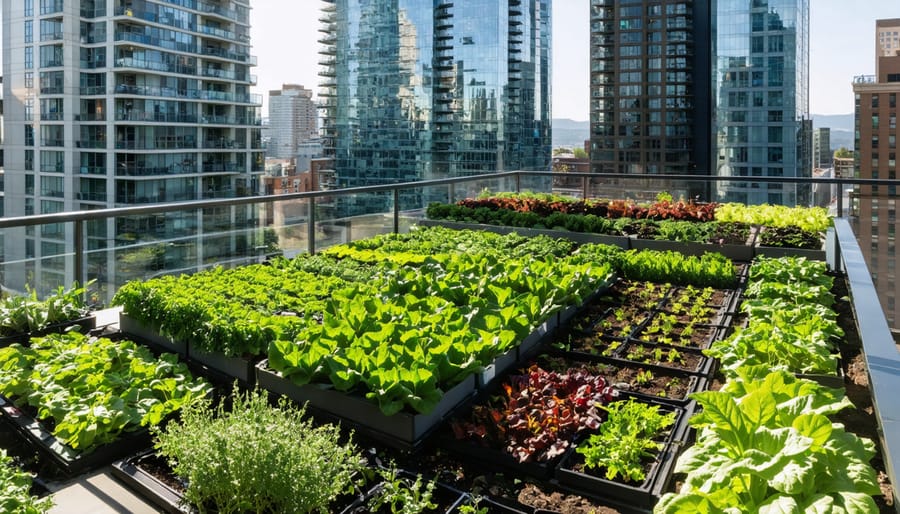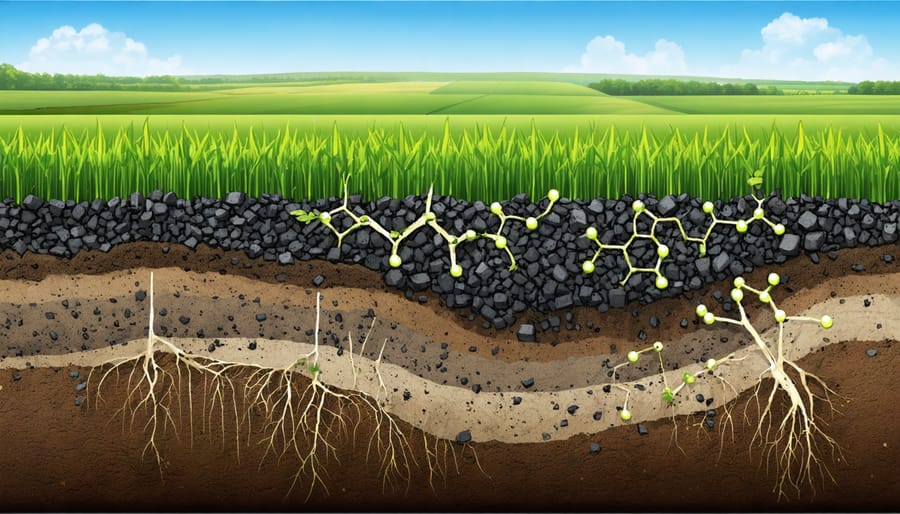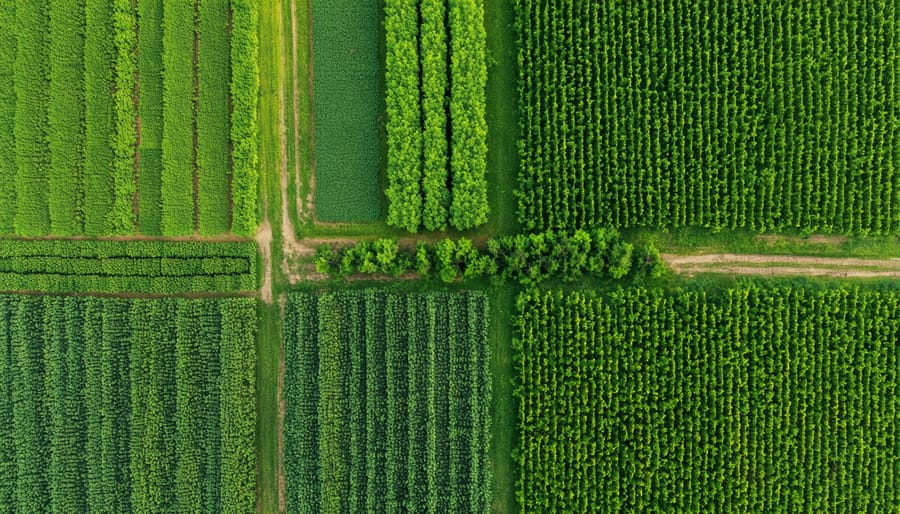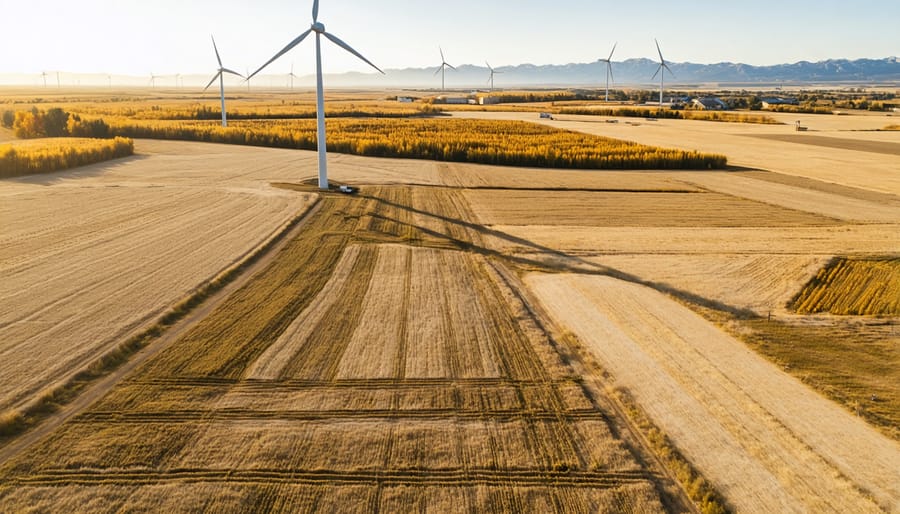Beneath every thriving farm lies a complex underground ecosystem where billions of organisms work in harmony to sustain life. Understanding soil health importance starts with recognizing this hidden workforce – from microscopic bacteria to earthworms – that transforms organic matter into nutrients, maintains soil structure, and supports resilient crop production across Alberta’s diverse agricultural landscape.
Recent soil biodiversity studies on Prairie farms reveal that just one teaspoon of healthy soil contains more living organisms than there are people on Earth. These beneficial organisms form nature’s most efficient recycling system, breaking down crop residues, fixing nitrogen, and creating stable soil aggregates that improve water retention and reduce erosion risks unique to our region.
For Canadian farmers, this underground economy represents both an inheritance to protect and an opportunity to innovate. By working with, rather than against, these natural processes, we’re discovering that soil biodiversity offers practical solutions to our most pressing agricultural challenges – from drought resilience to sustainable yield improvements, all while reducing input costs and building long-term soil fertility.
The Living Soil Network: Your Farm’s Underground Workforce
Meet Your Microscopic Farm Partners
Every handful of healthy Alberta soil contains billions of microscopic allies working tirelessly to support your farm’s success. These tiny partners include beneficial bacteria that convert atmospheric nitrogen into plant-available forms, much like natural fertilizer factories operating 24/7 beneath our feet.
Mycorrhizal fungi are particularly fascinating partners, forming vast underground networks that connect your crops. These fungi extend your plants’ root systems by up to 1,000 times, helping them access water and nutrients they couldn’t reach on their own. In fact, many Prairie farmers have observed stronger crop resilience during dry spells where these fungal networks are well-established.
Your soil also hosts an array of helpful nematodes and protozoa that regulate pest populations naturally. These microscopic animals work alongside larger allies like earthworms, which create channels for water and air while mixing organic matter throughout your soil profile.
Local soil testing labs in Alberta have found that fields managed with biodiversity in mind typically show higher counts of beneficial microorganisms. Dave Thompson, a third-generation farmer near Red Deer, shares: “Since we started focusing on soil life, we’ve seen better water retention and more consistent yields, even in challenging years.”
Remember, these organisms thrive when we minimize soil disturbance and maintain diverse crop rotations. Think of them as your underground workforce – the more you support them, the harder they’ll work for your farm.

How Soil Life Builds Your Farm’s Health
Think of your soil as a bustling underground city where billions of organisms work together to build your farm’s foundation. These tiny workers – from earthworms to beneficial bacteria – are constantly improving your soil’s health through three main processes.
First, they’re your farm’s recycling system. When crop residues fall to the ground, soil organisms break them down into nutrients your plants can use. This natural nutrient cycling saves you money on fertilizers while building organic matter. A healthy soil food web can release up to 100 kg of nitrogen per hectare annually – that’s significant savings for your operation.
These beneficial organisms also act as your soil’s immune system. Take Alberta farmer Dave Thompson’s experience: “Since improving our soil biology, we’ve seen fewer disease problems in our canola, and our yields have become more consistent.” Beneficial microbes compete with pathogens for space and resources, naturally suppressing soil-borne diseases.
Finally, soil life improves your soil’s structure. Earthworms create channels for water and root growth, while fungal networks bind soil particles together, creating stable aggregates. This improved structure helps your soil hold more water during dry spells and drain better during wet periods – crucial for managing Alberta’s variable weather patterns.
By supporting these underground workers through practices like reduced tillage and diverse crop rotations, you’re investing in your farm’s long-term productivity and resilience.
Alberta Success Stories: Farmers Building Living Soil

From Dust to Abundance: The Jensen Family Farm Story
When Mark and Sarah Jensen inherited their family’s 800-hectare farm near Lethbridge in 2015, they faced severely degraded soil from decades of intensive farming. Their story of transformation to organic farming in Alberta demonstrates how dedication to soil health can revolutionize a farming operation.
The Jensens began by implementing a comprehensive soil testing program, revealing critically low organic matter levels of 1.2% and minimal biological activity. Their first step was introducing a diverse seven-year crop rotation, including nitrogen-fixing legumes and deep-rooted perennials. They also adopted no-till practices and began applying compost tea and locally sourced organic amendments.
Within three years, their soil organic matter increased to 3.4%, and earthworm populations flourished. Water retention improved dramatically, reducing irrigation needs by 40%. The farm now supports over 15 crop species and has become a habitat for native pollinators and beneficial insects.
The financial results have been equally impressive. The Jensens’ input costs decreased by 35%, while crop yields have steadily increased. Their products now command premium prices in specialty markets, and the farm has become a model for regenerative agriculture in southern Alberta.
“The key was patience and trusting the process,” says Sarah Jensen. “We’re not just growing crops anymore; we’re nurturing an entire ecosystem.” The Jensens regularly host field days, sharing their experience with neighboring farmers and contributing to a growing community of regenerative practitioners in the region.
Building Soil Life in Cold Climate: Peace River Valley Experience
In the challenging climate of Northern Alberta’s Peace River Valley, farmers have developed innovative approaches to nurturing soil biodiversity despite the shorter growing season. Local farmer Sarah MacDonald shares her success story: “We’ve learned to work with our cold climate rather than against it by maximizing the warmer months and protecting soil life year-round.”
The key strategy involves using a combination of cold-hardy cover crops and strategic timing. Farmers plant frost-tolerant species like fall rye and winter wheat in late summer, providing crucial soil coverage during freeze-thaw cycles. This approach has shown remarkable results, with soil organic matter increasing by 2% over five years on participating farms.
Local agricultural extension specialist James Thompson emphasizes the importance of minimal soil disturbance: “We’ve observed that reduced tillage practices, combined with crop residue management, create protective micro-environments where beneficial organisms can thrive even during harsh winters.”
Innovative mulching techniques using locally available materials like straw and wood chips have proven effective in insulating soil life. These methods maintain more stable soil temperatures, allowing microorganisms to remain active longer into the fall and resume activity earlier in spring.
Community-supported monitoring programs have documented increased earthworm populations and mycorrhizal fungal networks in protected soils. These improvements have translated into practical benefits, with participating farms reporting 15-20% better water retention and reduced fertilizer needs.
The Peace River Valley experience demonstrates that cold climates need not be a barrier to building robust soil ecosystems. Through careful planning and adaptation of conservation practices, northern farmers are successfully creating resilient, living soils that support sustainable agriculture.
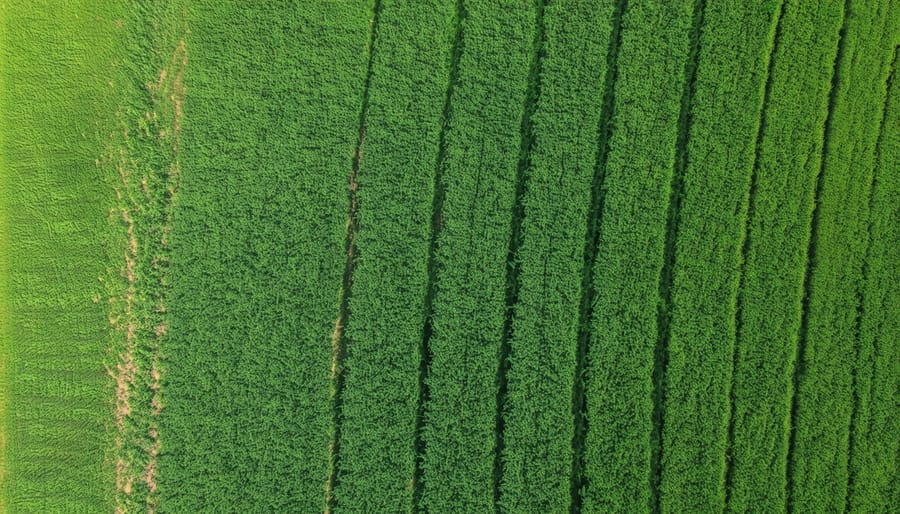
Your 5-Step Action Plan for Boosting Soil Life
Smart Crop Rotation That Feeds Soil Life
In Alberta’s unique climate, implementing effective sustainable farming practices through smart crop rotation is essential for maintaining soil health. A successful three to four-year rotation typically starts with deep-rooted crops like alfalfa or clover, followed by nitrogen-demanding crops such as canola or wheat, and finally, shallow-rooted crops like barley or oats.
For optimal results in our prairie conditions, consider including pulse crops like field peas or lentils every third year. These crops not only fix nitrogen but also support beneficial mycorrhizal fungi networks. Local farmers report significant success with including cover crops like fall rye or winter wheat between main crop cycles, particularly in areas receiving adequate moisture.
Many Alberta producers have found success by incorporating brassicas like radish or turnips as biological tillers during transition periods. These crops help break up compacted soil layers while providing excellent habitat for beneficial soil organisms. For smaller operations, adding a season of green manure crops like sweet clover can dramatically improve soil structure and organic matter content.
Remember to adjust your rotation based on your specific soil type and local weather patterns. Southern Alberta farmers might need more drought-resistant crop sequences, while those in central regions can often implement more diverse rotations.
Cover Cropping for Year-Round Soil Protection
In Alberta’s challenging climate, maintaining year-round soil protection is crucial for preserving soil health and biodiversity. Cold-hardy cover crops offer an excellent solution, particularly during our harsh winters and shoulder seasons.
Fall rye and winter wheat stand out as reliable options, capable of surviving temperatures well below -30°C while providing essential soil coverage. These cereals establish quickly in late summer or early fall, developing robust root systems that hold soil in place during spring thaws.
For mixed farming operations, hairy vetch and winter peas not only protect soil but also fix nitrogen, improving soil fertility for subsequent crops. When planted in combination with cereal cover crops, they create a diverse root network that supports beneficial soil organisms and enhances organic matter content.
Local farmer Mike Peterson from Olds, Alberta, shares his success: “We’ve been using a mix of fall rye and hairy vetch for five years now. The difference in soil structure and earthworm activity is remarkable, especially in our sandy loam fields.”
Management tips for success:
– Seed 4-6 weeks before first frost
– Maintain adequate soil moisture during establishment
– Consider roller-crimping in spring rather than chemical termination
– Monitor growth in early spring to time termination properly
These practices help maintain living roots in the soil system throughout the year, supporting diverse microbial communities and improving overall soil resilience.
Minimal Tillage Methods That Preserve Soil Communities
In Alberta’s diverse agricultural landscape, implementing no-till farming practices and minimal tillage methods has become increasingly crucial for preserving our vital soil communities. The key lies in selecting the right equipment and timing your operations strategically.
For effective minimal tillage, consider using precision implements like vertical tillage tools or strip-till equipment, which disturb only the necessary portion of soil while leaving protective residue between rows. Many Alberta farmers have found success with modern air drills equipped with low-disturbance openers, allowing for accurate seed placement while maintaining soil structure.
Timing is equally critical. Work your fields when soil moisture levels are optimal – typically when a handful of soil crumbles easily but doesn’t form a wet ball. In our prairie climate, this often means planning operations for early spring or late fall, avoiding wet periods that can lead to compaction.
Local farmer Mike Henderson from Lacombe County shares, “We’ve reduced our tillage passes by 60% by investing in a precision planter and paying attention to soil conditions. Our earthworm populations have doubled in the past three years.”
Consider these practical implementation steps:
– Start with fields that have fewer weed pressure issues
– Maintain consistent operating depths
– Keep ground speed moderate to prevent soil throwing
– Leave at least 30% crop residue coverage
– Monitor soil temperature and moisture before operations
Equipment maintenance plays a crucial role too. Sharp cutting edges and properly adjusted tools ensure clean cuts that minimize soil disturbance. Many successful Alberta operations have found that well-maintained equipment not only preserves soil structure but also reduces fuel consumption and operating costs.
Remember that transitioning to minimal tillage methods is a gradual process. Start with a portion of your land and expand as you gain confidence and experience with these conservation practices.
The intricate relationship between soil health and biodiversity represents a cornerstone of sustainable agriculture in Alberta and across Canada. As we’ve explored throughout this article, nurturing soil biodiversity isn’t just about environmental stewardship – it’s about building resilient farming operations that can withstand climate challenges while maintaining productive yields.
By implementing practices such as crop rotation, reduced tillage, and cover cropping, Alberta farmers are already demonstrating leadership in soil conservation. These efforts not only protect the countless microorganisms that make our soil productive but also contribute to greater farm profitability through reduced input costs and improved crop resilience.
Remember, every step toward better soil management, no matter how small, creates a positive ripple effect throughout our agricultural ecosystem. Whether you’re managing thousands of hectares or maintaining a small farm operation, your soil stewardship practices matter. Consider starting with one new biodiversity-enhancing technique this growing season, such as introducing cover crops or reducing tillage intensity.
Connect with your local agricultural extension office, join farmer-led soil health groups, or participate in field days to learn from peers who are successfully implementing these practices. Together, we can build a future where productive agriculture and thriving biodiversity work in harmony, ensuring sustainable food production for generations to come.
Let’s continue to share knowledge, support one another, and take action to protect and enhance the living foundation of our farms – our soil.


